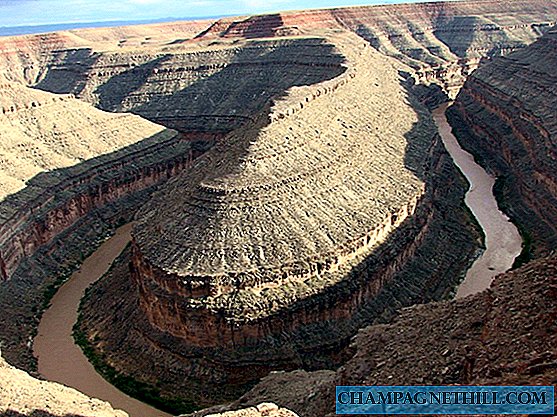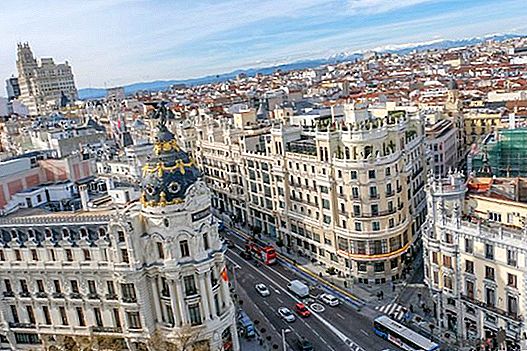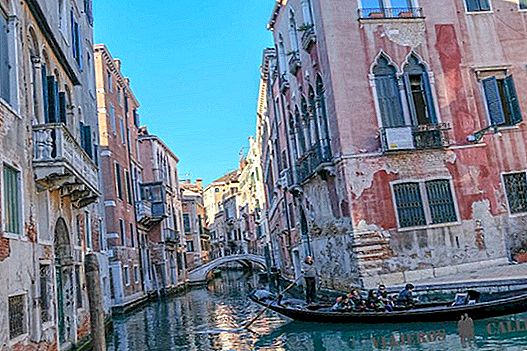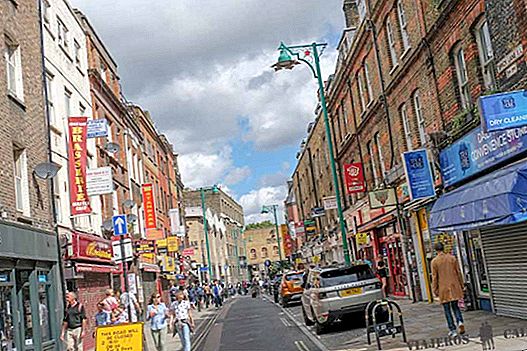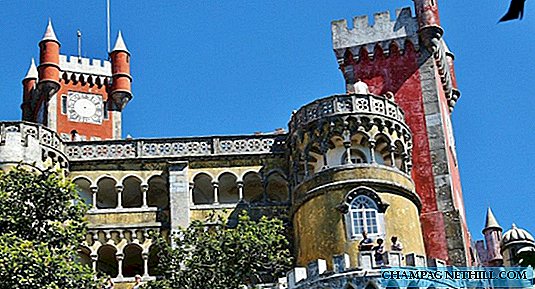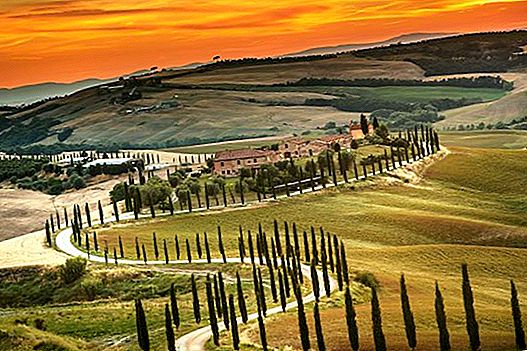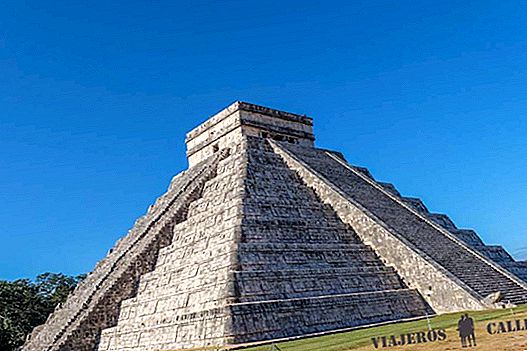The Roman Forum was the place where the most important activities in ancient Rome were developed, such as commerce, religion, business, justice or social life. Located in the center of the city, this great space was also an architectural marvel with temples, columns and arches of which large parts are still preserved and which have become one of the most recommended visits in Rome.
In addition to touring the Roman Forum, we recommend completing the visit with the climb to Palatine Hill, where the ruins of the imperial palaces are located and from where you get the best views of the Forum.
We have visited the Roman Forum the three times we have traveled to the Eternal City, the last two on a trip to Rome in 3 days and recently we went back to it, taking advantage of the month we were in the city, during which we wrote this guide Travel to Rome step by step.
Based on our experience, we tell you the best ways to get to know the Roman Forum, such as booking skip-the-line tickets and guided tours in Spanish, schedules, how to get there and prices, so you can choose the one that best suits your time in the city.
How to get
To get to the Forum in Rome, located between the Colosseum and Piazza Venezia, you have several options:
- Walking: If you are staying in Trastevere, in the center or near Termini Station, we recommend you to reach the Forum on foot, to enjoy this short walk through the Eternal City.
- Meter: Metro line B will leave you at the Colosseo stop, which is near the south entrance of the Forum.
- Bus: Buses 60, 75, 84, 85, 87, 117, 175, 186, 271, 571, 810 and 850 stop near the Forum.
The Roman Forum has two entrances: the main one located in front of the Colosseum and another side that is located on Via dei Fori Imperiali. Keep in mind that most people concentrate on the south entrance, so it may be a good option to approach the side entrance to avoid queues.
Schedule
The Roman Forum is open every day of the year except December 25 and January 1 and opens at 8:30 a.m. while closing depends on the time of year.
Account that you have to enter at least one hour before closing, to be able to make the tour with some peace of mind.
Closing times:
- At 4:30 p.m. from the last Sunday of October until February 15.
- At 5 p.m. from February 16 to March 15.
- At 5:30 p.m. from March 16 to the last Saturday of March.
- At 7:15 p.m. from the last Sunday of March until August 31.
- At 7 p.m. from September 1 to September 30.
- At 6:30 p.m. from October 1 until the last Saturday of October.

Rome Forum
Entrances to the Roman Forum
It is necessary to know that the entrances to the Roman Forum are combined and also include the entrances to the Palatine Hill and the Roman Colosseum. You will also have 2 days to visit the three places that are included (Roman Forum, Colosseum and Palatine), although you can only visit each of them once.
To buy the general ticket, which has a price of 12 euros, it is preferable to approach the access of the Roman Forum, via Via dei Fori Imperiali, avoiding the longest queues at the ticket office in front of the Colosseum.
Skip-the-line tickets to the Forum in Rome or with prior reservation online
The price of skip-the-line tickets to the Rome Forum is 14 euros, 2 euros more than the general one, and can be booked on this official website. Although the website shows you the different options to enter the Roman Colosseum, remember that all these entries always include the Forum and the Palatine.
It is advisable, if you do not want to take a guided tour, take an audio guide or video guide to visit the Roman Forum and the Palatine since both places have a very interesting history and many remains of their most important places are not preserved.

Rome Forum from the Palatine Terrace
Guided tour of the Roman Forum in Spanish
The guided visit to the Roman Forum is for us the best option to get to know it, since in this way, you will not miss anything of this space that functioned as a center of control and power of the vast Roman Empire. During the tour with a specialized guide you will know all the details of each monument of the Forum, in addition to having answers to all the questions you may have.
You can book here the guided tour of the Forum of Rome, the Palatine and the Colosseum in Spanish skipping the lines.
If during your trip to Rome you also plan to visit the Vatican and its famous museums, you may find it more profitable and comfortable, book this visit in Spanish that includes everything, skipping the lines too.

Roman Forum
OMNIA Vatican and Roma Card
The OMNIA Vatican and Roma Card is the best way to save money and time on your trip to Rome. With this card you will have great discounts on 30 tourist attractions in the city, public transport and the free tourist bus, in addition to having the free skip-the-line entrance to the most famous places in the city such as the Colosseum, the Forum, the Palatine, the St. Peter's Basilica, the Castle of Sant Angelo, the Capitoline Museums and the essential Vatican Museums.
When you buy the OMNIA Vatican and Roma Card, they will give you a guide with all the attractions included or at a discount, as well as a map to plan your trip and make the most of the time.
You can book here the OMNIA Vatican and Roma Card and forget about the long queues.
More information in this post about the OMNIA Card and in this one about which one is better, OMNIA or Roma Pass ?.

Via Sacra
What to see in the Roman Forum
The Roman Forum, one of the most important places to visit in Rome, has several points of interest that you cannot miss:
- The Sacred Way, the most famous street in Ancient Rome that linked the Colosseum with the Campidoglio Square across the Forum that currently connects the Curia with the Arch of Titus.
- Julia Curia: meeting place of the Senate, which stands out for its fantastic state of conservation.
- Titus Arch: Arc de Triomphe commemorating the victory of Rome over Jerusalem in the year 70.
- Severe Seventh Arch: Arch of the year 203 A.D., built to honor the third anniversary of Emperor Severus Seventh.
- Vesta Temple: one of the oldest temples in Rome that has a circular shape.
- House of the Vestales: a part of the inner courtyard of the building where the Vestal Virgins resided is preserved. These priestesses had a relevant role relating to the future of the city.
- Temple of Antonio and Faustina: it is the best preserved temple of the forum, being converted into a church. The building was built by Emperor Antonio Pio to his wife Faustina in 141 A.D.

Temple of Antoninus and Faustino
- Temple of Castor and Pollux: Three unique Corinthian columns of this temple built to commemorate the victory in the battle of Lake Regilo are preserved.
- Basilica of Maxentius and Constantine: It is the largest building in the forum, in which a part of three huge vaults are preserved.
- Saturn Temple: dedicated to the Saturn deity 8 Ionic columns are still preserved. It is one of the oldest temples in Rome built between 501 and 498 B.C.
- Julius Caesar's Temple: the altar is preserved where the most famous of all the emperors of Rome, Julius Caesar, was cremated.
- Seal Column: It is the last monument built in the forum. Its 13 meters high rose in 608 A.D. in honor of the emperor of Byzantium.
- Piazza Campidoglio viewpoint: We want to highlight this viewpoint, since although it is outside the forum, behind Piazza Campidoglio, it is the best place to take a postcard photo of the Roman Forum.
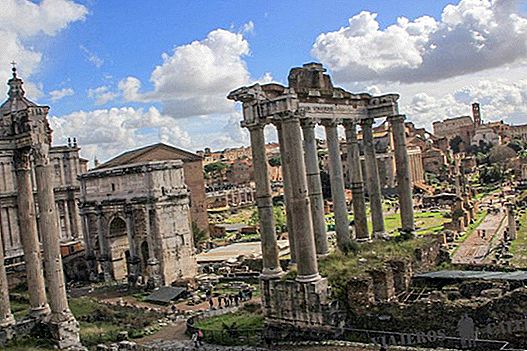
Roman Forum from Piazza Campidoglio
What to see in the Palatine
Climbing the Palatine Hill at the foot of the Forum is another of the best things to do in Rome. This is where Romulo founded the city of Rome and later became the residence of Roman emperors.
The Palatine has several important points to see:
- Palatine Terrace: Going up some stairs located on one side of the forum you will reach this terrace, from where you will have the best views of the Forum with the Colosseum in the background.
- Livia's house: This building from the 1st century BC, is one of the best preserved in the Palatine where you can still see remains of mosaics and murals.
- Augustus House: private residence of Emperor Augustus, which still retains part of its beautiful frescoes.
- Domus Flavia: huge palace built in the year 81 B.C. by Emperor Domitian.
- Palatine Museum: small museum with different objects, mosaics and sculptures, found during the excavations of the Palatine.

The Palatine
Do you want to organize a trip to Rome?
Get it here:
The best offers of Flights to Rome here
The best hotels at the best prices in Rome here
Get € 35 for your reservation with AirBnb here
Book the best tours and excursions in Rome in Spanish here
Book your transfer Airport⇆Roma here
The 10 best tours and excursions in Rome
Guide of Rome in 4 days
Guide of Rome in 5 days
10 essential tips for traveling to Rome
The best free tours in Rome for free
Roma Pass: how it works, what it includes and prices
Rent your car in Italy at the best price here

 The best offers of Flights to Rome here
The best offers of Flights to Rome here The best hotels at the best prices in Rome here
The best hotels at the best prices in Rome here Get € 35 for your reservation with AirBnb here
Get € 35 for your reservation with AirBnb here Book the best tours and excursions in Rome in Spanish here
Book the best tours and excursions in Rome in Spanish here Book your transfer Airport⇆Roma here
Book your transfer Airport⇆Roma here The 10 best tours and excursions in Rome
The 10 best tours and excursions in Rome Rent your car in Italy at the best price here
Rent your car in Italy at the best price here